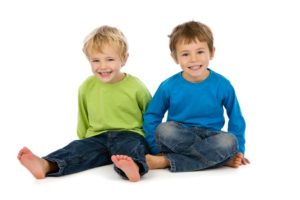
![]() I've been thinking a lot about pesticides in foods and pesticides in honey since the recent post about untreated lawns and bees. Research finds that untreated lawns (no pesticides of any kind) with their diversity of flowering weeds or "spontaneous flowering plants" (such as clover and dandelions) are actually great pollen and nectar sources for bees. In other words, untreated lawns are great bee habitats! We think of conventional farms as using a lot of pesticides, but that is also true of suburbia with its obsession with "perfect lawns" and gardens, with no weeds allowed. According to U.S. Fish and Wildlife Service: Up to ten times more pesticides per acre are used on suburban lawns than on conventional farms! Perhaps it's time to view clover and other "spontaneous flowering plants" as beneficial wildflowers providing food for bees, and not undesirable weeds that need eradicating with pesticides.
I've been thinking a lot about pesticides in foods and pesticides in honey since the recent post about untreated lawns and bees. Research finds that untreated lawns (no pesticides of any kind) with their diversity of flowering weeds or "spontaneous flowering plants" (such as clover and dandelions) are actually great pollen and nectar sources for bees. In other words, untreated lawns are great bee habitats! We think of conventional farms as using a lot of pesticides, but that is also true of suburbia with its obsession with "perfect lawns" and gardens, with no weeds allowed. According to U.S. Fish and Wildlife Service: Up to ten times more pesticides per acre are used on suburban lawns than on conventional farms! Perhaps it's time to view clover and other "spontaneous flowering plants" as beneficial wildflowers providing food for bees, and not undesirable weeds that need eradicating with pesticides.
Thus these recent articles about pesticide residues in foods, including honey, caught my eye. Notice that conventional foods have pesticide residues, but not organic foods (or they may have much lower pesticide residues, typically due to contamination from neighboring farms). Honey is tricky - there may be pesticide residues because bees fly to pesticide contaminated areas, and also beekeepers may use pesticides for pest control when caring for their bees and bee hives. The most uncontaminated honey would be from organic beekeepers located in pristine areas, with no industry, farming, or treated lawns nearby, and who do not buy "wax starter comb". Bees forage for nectar and pollen within 2 miles from the bee hive, but may fly up to 7 miles from the bee hive. As an article in Scientific Reports pointed out: "Any agrochemical applied anywhere within a colony's extensive reach can end up back in the hive."
Note that no one knows what the long-term health effects are of ingesting foods daily with low levels of mixtures of pesticides (chronic exposure), and also of ingesting endocrine disruptors. A "cocktail effect" may occur from combined traces of different pesticides - the chemicals may be more toxic when combined than alone. We just don't know. The FDA just started testing for glyphosate residues (glyphosate is the active ingredient in Roundup) in 2016 - and this is the most heavily used pesticide in the world! Currently nearly 300 million pounds of glyphosate are applied each year on U.S. farms. Now add in all the other ways we're exposed to pesticides - both indoors and outdoors lawns, gardens, farms), even on our treated pets. Something to think about.
A number of Kellogg and Nestle brand muesli cereals were among those tested in the following research. Muesli is a breakfast cereal of rolled oats, perhaps other grains, dried fruit, and nuts. ...continue reading "Pesticide Residues In Honey and Other Foods"

 Lead exposure is a big problem for children throughout the United States and the rest of the world - whether lead from plumbing, lead paint, lead solder, and even from nearby mining. There are no safe levels of lead in children (best is zero) because it is a neurotoxicant - thus it can permanently lower IQ scores as well as other neurological effects. More lead gets absorbed if the person also has an iron deficiency than if the person has normal iron levels.
Lead exposure is a big problem for children throughout the United States and the rest of the world - whether lead from plumbing, lead paint, lead solder, and even from nearby mining. There are no safe levels of lead in children (best is zero) because it is a neurotoxicant - thus it can permanently lower IQ scores as well as other neurological effects. More lead gets absorbed if the person also has an iron deficiency than if the person has normal iron levels. Many articles have been written about
Many articles have been written about  One of the dreaded afflictions of getting older is age-related macular degeneration (AMD), which is a leading cause of vision loss in Americans 60 years and older. It has no cure. Thus this study finding that eating a Mediterranean diet, and especially lots of fruit, was associated with a lower risk of macular degeneration was welcome news. They also found a protective effect from drinking caffeinated beverages - about 78 mg of caffeine per day (about one cup of coffee or one shot of espresso). A Mediterranean diet stresses eating fruits, vegetables, nuts, whole grains, legumes, fish, seeds, and olive oil. From Science Daily:
One of the dreaded afflictions of getting older is age-related macular degeneration (AMD), which is a leading cause of vision loss in Americans 60 years and older. It has no cure. Thus this study finding that eating a Mediterranean diet, and especially lots of fruit, was associated with a lower risk of macular degeneration was welcome news. They also found a protective effect from drinking caffeinated beverages - about 78 mg of caffeine per day (about one cup of coffee or one shot of espresso). A Mediterranean diet stresses eating fruits, vegetables, nuts, whole grains, legumes, fish, seeds, and olive oil. From Science Daily: Conserving native bees for their
Conserving native bees for their  More bad news about BPA (bisphenol A) - an
More bad news about BPA (bisphenol A) - an  Once again, research shows that a
Once again, research shows that a  My
My